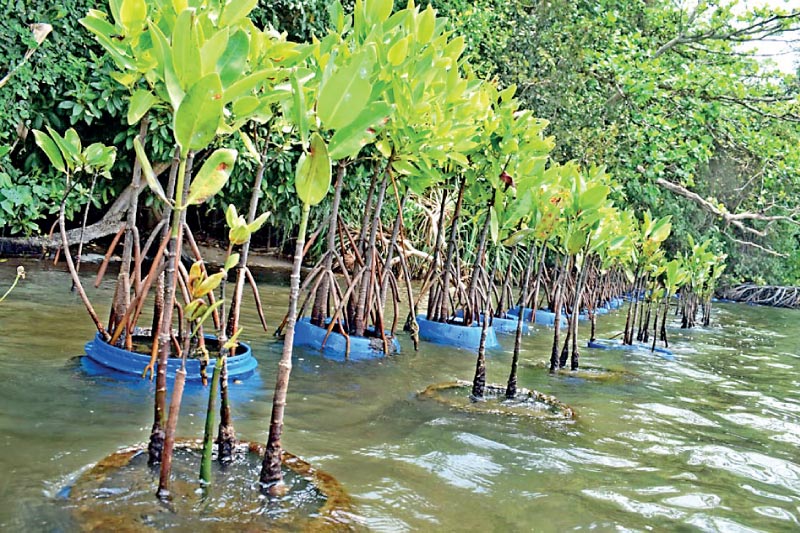Monday Dec 08, 2025
Monday Dec 08, 2025
Thursday, 18 July 2024 01:33 - - {{hitsCtrl.values.hits}}

INSEE Cement has exceeded 10 hectares of mangrove restoration work in Sri Lanka, reaffirming its commitment to environmental conservation and biodiversity. Over the past six years, the company has demonstrated its dedication to environmental stewardship and community well-being, by 10,000 mangrove saplings and spearheading extensive mangrove restoration projects across the country.
This achievement has been possible due to INSEE’s strong partnerships and close collaboration with key stakeholders such as the Department of Wildlife, Department of Forests, Coastal Conservation Department (CCD), the Central Environmental Authority and local universities, under the direction of the Ministry of Environment. Technical guidance from the IUCN has further strengthened this work. INSEE employees also play a key role by participating in the mangrove restoration work, showcasing their commitments to Sri Lanka’s conservation.
“We carry out our mangrove restoration work along three locations in the North-Western and Southern Provinces. From planting to diligent monitoring, we employ a range of maintenance activities to ensure the sustained growth and vitality of the mangrove plants,” says INSEE Cement Sustainability and Corporate Social Responsibility Senior Manager Rohan Lakmal. “Through this mangrove restoration initiatives, our aim is to safeguard our precious ecosystems while also contributing to the well-being of local communities and the broader environment.”
INSEE Cement’s mangrove restoration work is a cornerstone of the company’s Sustainability Ambition 2030 which is built upon three key pillars: climate and energy, biodiversity and water, and the circular economy. These pillars are interwoven with the themes of zero harm for people and active community and stakeholder engagement, forming a comprehensive environmental, social, and governance framework that guides the company’s efforts.
The mangrove restoration journey dates back to 2017 with a project in Kurulu Duwa Island in Koggala, near the INSEE Ruhunu Cement Plant. In collaboration with the Department of Wildlife, the company started planting the Maha Kadol (Rhizophora mucronata) mangrove species. A distinctive aspect of this project is the use of pots made from damaged cement produced by the plant, highlighting INSEE’s innovative approach to sustainability. As the project flourished, plans were made to further expand the site, reinforcing INSEE’s long-term commitment to environmental conservation.
Building on this foundation, INSEE launched another significant project in April 2022 at the Serakkuliya site in Aruwakkaru, near its quarry area. This initiative, carried out in partnership with the Department of Forests and supported by dedicated INSEE employees, saw the planting of both Maha Kadol (Rhizophora mucronata) and Manda (Avicennia marina) mangrove species. Despite challenges identified through a baseline survey conducted with the International Union for Conservation of Nature (IUCN), INSEE’s resolve did not waver. In 2024, we engaged in mangrove restoration along the Kalpitiya coastal area with CCD towards meeting our goal of planting up to 5,000 Rhizophora mucronata plants in 2024.
By actively engaging with the community and various stakeholders, INSEE Cement ensures that its sustainability efforts are inclusive and impactful. The company’s dedication to zero harm for people, combined with its environmental initiatives, highlights its commitment to creating a sustainable future. Through these ongoing mangrove restoration projects and its comprehensive sustainability framework, INSEE Cement is setting a benchmark for corporate responsibility and environmental stewardship in Sri Lanka.